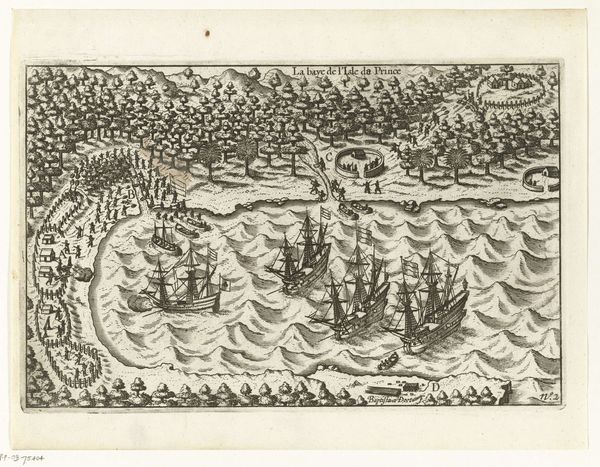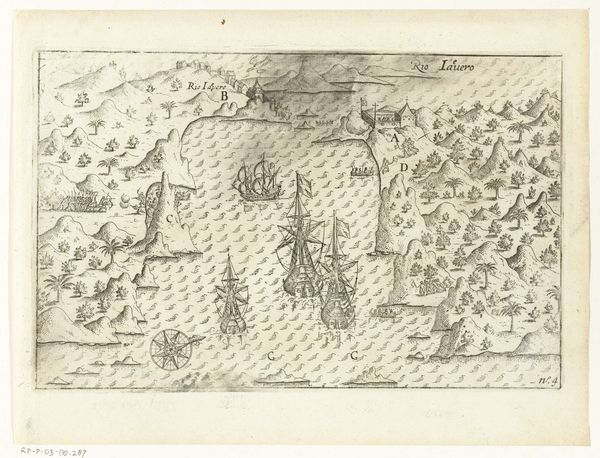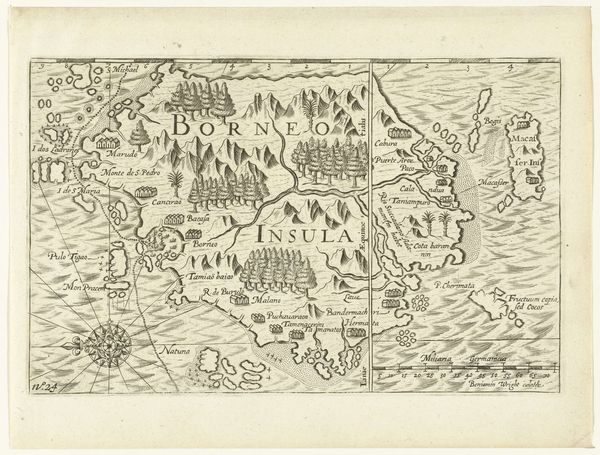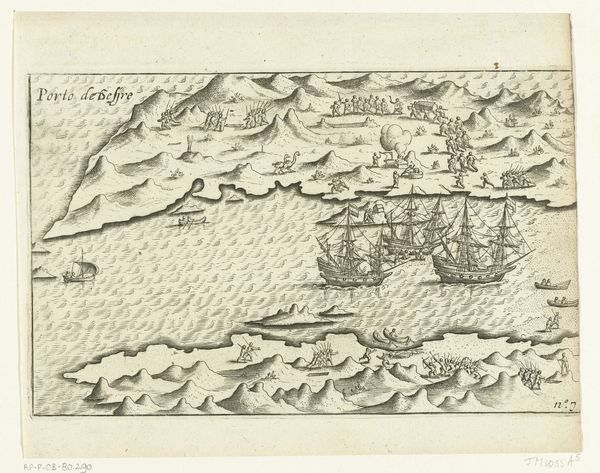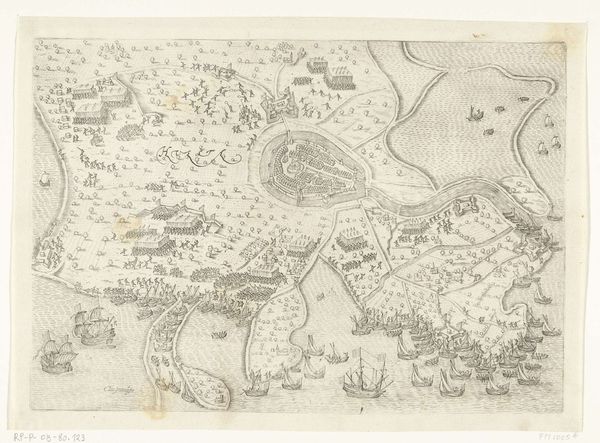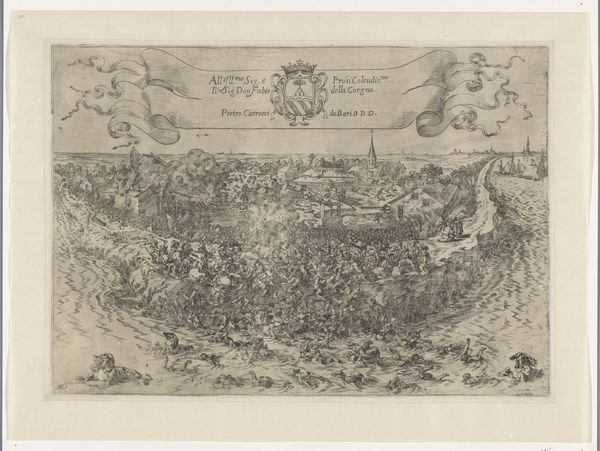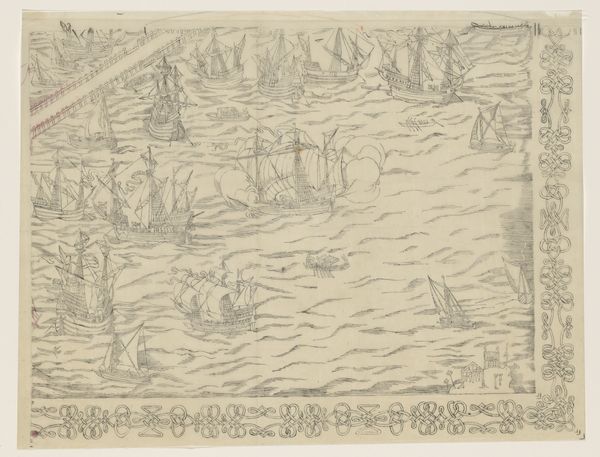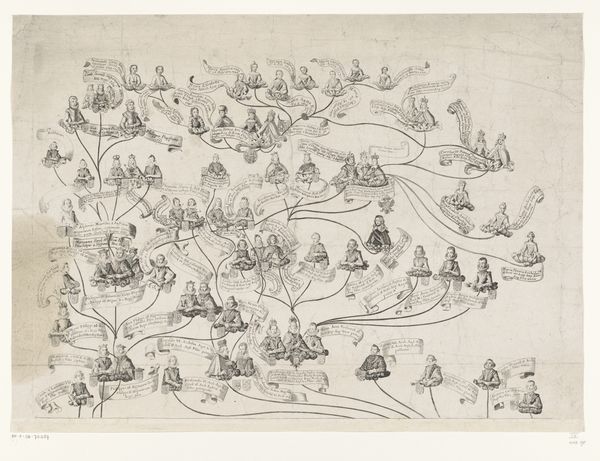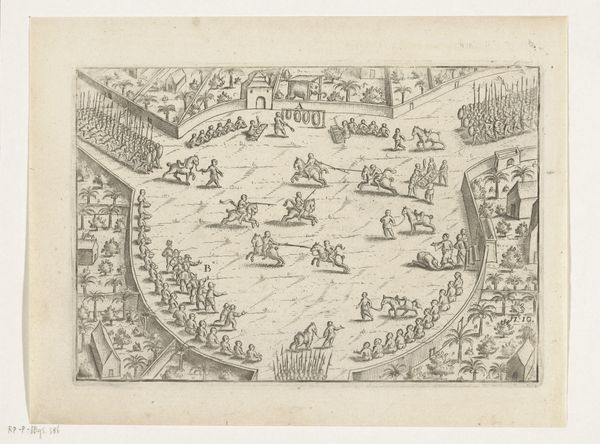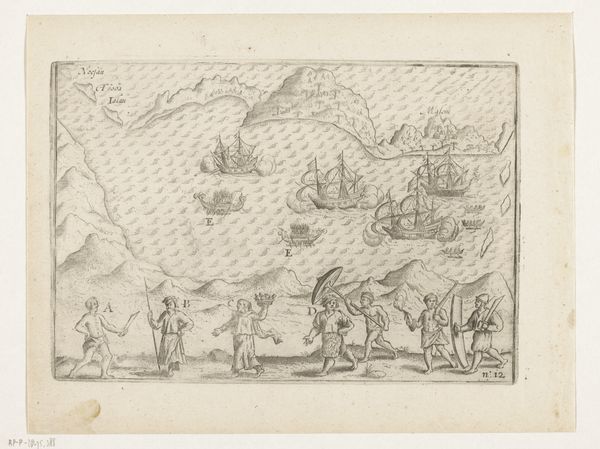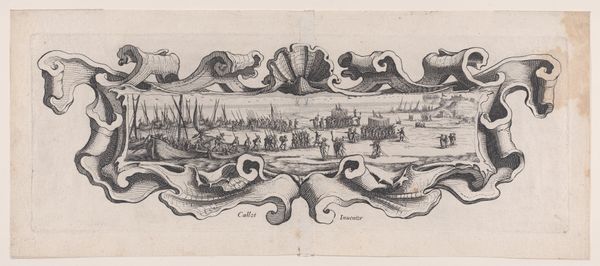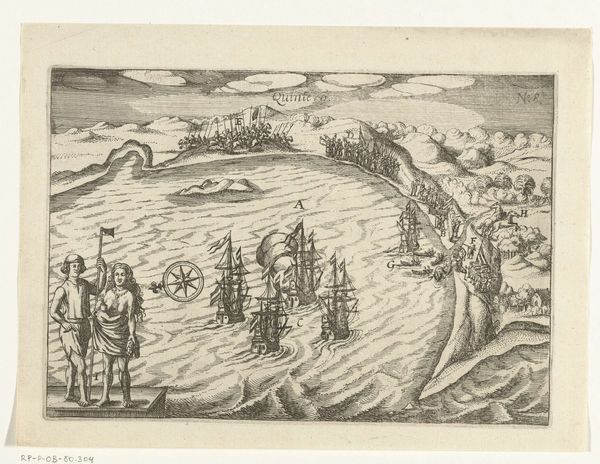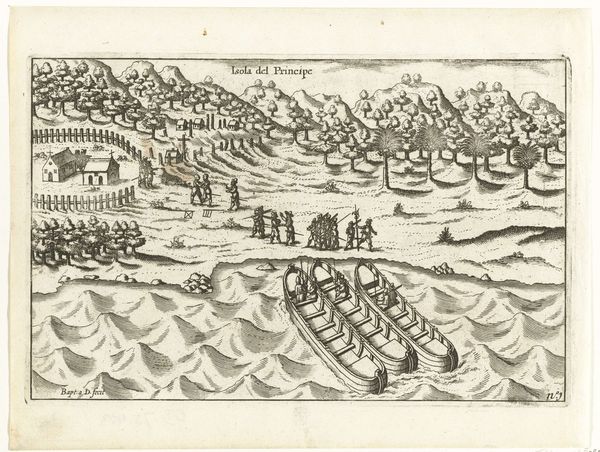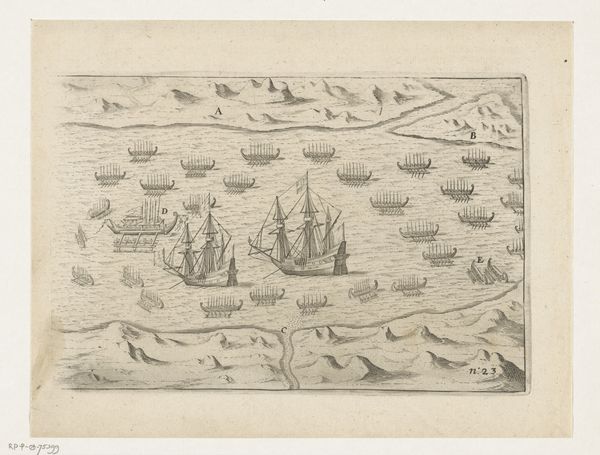
De twee schepen bij één van de Ladrones of Mariana eilanden, 1600 1601 - 1646
0:00
0:00
print, ink, engraving
#
medieval
#
pen drawing
# print
#
landscape
#
form
#
ink line art
#
11_renaissance
#
ink
#
linocut print
#
geometric
#
line
#
cityscape
#
engraving
Dimensions: height 145 mm, width 225 mm
Copyright: Rijks Museum: Open Domain
Curator: So, what catches your eye about Baptista van Doetechum's "De twee schepen bij één van de Ladrones of Mariana eilanden, 1600"? Editor: It's a print, maybe an engraving, depicting two ships near a heavily wooded island. There’s a real sense of isolation and vulnerability in the ships amidst that vast ocean, even though they're approaching land. What strikes you most about this image? Curator: The title itself – "Isle de Ladrones" or "Island of Thieves" – that's our entry point. This name, given by Europeans, speaks volumes about the colonial gaze and the power dynamics at play. How do you think this depiction of the island and the ships contributes to that colonial narrative? Editor: Well, the ships are quite large and imposing compared to the island. It gives a sense of European dominance...almost like they are encroaching. Curator: Exactly. The print isn't just a neutral landscape; it’s a visual representation of a specific historical moment – the beginning of European contact and the imposition of Western power structures on indigenous populations. We need to consider how these images reinforced a European sense of superiority and justified colonial actions. Where do you see evidence of these power imbalances represented visually? Editor: I think it's in the details... the tiny boats surrounding the large ship, as if they are feeding off of it. Is there any information available from the islanders’ perspective on this encounter? Curator: Sadly, accounts from the indigenous people of the Mariana Islands are scarce, because they were systemically suppressed, or filtered through the pens of European observers. The lack of an indigenous counter-narrative here forces us to consider how the artist’s choices reflect and reinforce a colonizer's worldview. Looking at this print, what responsibility do you think we have to critically examine such historical documents and the biases embedded within them? Editor: It sounds like we have an obligation to seek a broader context beyond what’s initially presented, even if the search takes you on unexpected voyages. Thank you, this gave me so much to think about. Curator: Agreed! Recognizing those biases is the first step to a more equitable and thorough understanding of history.
Comments
No comments
Be the first to comment and join the conversation on the ultimate creative platform.
